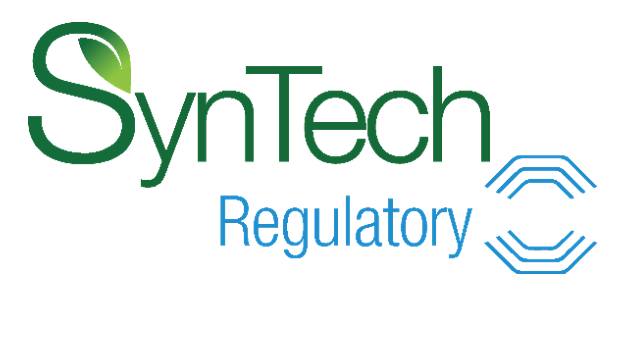Biofuel: Brazilian Leadership
Alternative sources of energy have been developed as cheaper, cleaner alternatives to nonrenewable fossil fuels that reduce global warming and dependence on oil-rich nations. Brazil stands out with its more than three-decade experience in biofuel, largely producing alcohol from sugarcane and, on a smaller scale, producing biodiesel and developing bio-kerosene from oily plants for airplane fuel.
Brazil has cultivated sugarcane for sugar since its colonization by the Portuguese in the 16th century. However, in the first world oil crisis, when the price of a barrel of oil went from US $2.91 in Sept. 1973 to $12.45 in March 1975, the country began promoting research for alcohol use as fuel. On Nov. 14, 1975, the National Alcohol Program was created, which came to be known as Pro-Alcohol. In 1979, the first automobile with its engine running 100% alcohol was launched in the Brazilian market, the Fiat 147. Studies indicate that ethanol is economically feasible when the crude oil barrel costs above $36, much less than the current price of $58.
Pro-Alcohol reached its peak at the end of the 1980s, when 90% of Brazilian vehicles had alcohol engines. After some highs and lows, the program came close to being extinguished. From 1995 to 2000, the manufacturing of engines for alcohol use went near zero.
Today, with the price of petroleum at approximately $60/barrel, the situation is very different. The use of ethanol from sugarcane is part of the everyday routine for Brazilians. One million people are estimated to be employed in sugarcane cultivation (750,000 direct jobs and 250,000 indirect jobs) in over 50,000 agribusinesses and 350 alcohol/sugar manufacturing sites. The market share of automobiles that run on alcohol or alcohol-gasoline (known as “flex system”) was around 52% in June 2005 and should reach 80% by 2010. In order to respond to ethanol demand (exports included), Brazil will need to produce 100 billion liters of fuel in the next 20 years.
Staying In Front
Brazil is the largest world producer of ethanol for fuel, followed by the US, which uses corn as a biomass source that provides a much lower energetic conversion than sugarcane. The two countries produce 70% of the world’s ethanol.
Other sources for ethanol are being studied at a fast pace. Such is the case of cellulose, which has many advantages over corn and sugarcane, including greater biomass production, less intensive crop cultivation, and the use of raw materials like organic waste. Local scientists estimate cellulose ethanol will be possible by 2009, after complete know-how of acid hydrolysis technology is available.
Support For Brazilian Farming
Despite the crisis that Brazilian agribusiness has gone through in the last two years due to harvest frustrations aggravated by unfavorable currency exchange rates, sugarcane has maintained a positive income for the sector due to:
- The rise in global sugar prices and in alcohol exportation to the US, Holland, and Japan, which reached around 3 billion liters in the 2006/07 harvest (in spite of the very elevated importation tax of US $0.54 per gallon for the US market).
- The addition of 20% to 24% ethanol to gasoline, equal to 6 billion liters/year.
- A greater use of ethanol due to the popularity of flex fuel technology, accessible since 2003 and now present in over 2 million vehicles.
- More competitive prices compared to gasoline only.
In 2006, sugar exportation represented the second highest value in exportation of agricultural commodities, trailing only soybeans. Soybean farmers that had sugarcane crop know-how and were located in adequate areas increased the sugarcane planted area in detriment of soybean. Such is the case of Agromen, which reduced its soybean area from 25,000 hectares (Ha) to 19,000 Ha, and increased sugarcane crops in 7,000 Ha to a total of 40,000 Ha of sugarcane.
Answering Demand
Brazil is the greatest world producer of sugarcane with a planted area of 6.2 million Ha. The State of São Paulo is the main producer, with over 50% of the country’s planted area.
Still, to respond to the global ethanol demand, Brazil needs to build at least 100 new mills by 2010. Currently, Brazil’s production capacity is 17 billion liters per year, with 248 mills operating in the mid-south and 88 in the northeast. According to an official survey, in the next five years, 89 mills shall start operating, with an estimated capacity of 6 billion liters, and 40% of this production will be directed to global markets.
The production of sugarcane, which is around 425 million tons, shall increase to 685 million tons by the 2012/13 harvest. As an incentive, the government will provide ample credit with low interest rates.
Globally, if there is a replacement of 10% of gasoline by ethanol, the demand shall be of 220 billion liters. For that to happen, flex fuel technology is believed to be fundamental. Brazil could take up 50% of this market, or 110 billion liters. Around $10 billion in investments would be necessary, and an increase from 6 million Ha to 30 million Ha in planted area, or 10% of Brazil’s total agricultural area. In terms of the potential market for pesticides, it represents around $1.8 billion of herbicides and insecticides, or 50% of the current total pesticides market of Brazil.
Advantages And Challenges
The perspectives in this sector are very optimistic, with various large companies preparing to compete within it. Petrobras, Brazil’s stated-owned corporation that holds exclusive alcohol distribution rights, has associated with the Japanese company Mitsui, which plans to build 30 to 40 mills in the country, with production destined for export. England’s investment company Clean Energy Brazil, under Temple Capital Partners, is focused mainly in alcohol, and intends to invest in at least four mills. The French group, Louis Dreyfus, has acquired four mills, and has become one of the main producers of sugar and alcohol.
Regardless of all these favorable perspectives, there still remain challenges. It is essential to create regulating stocks; to stabilize prices according to the harvest; to fight illegal commercialization, tax evasion, and alcohol adulteration in point-of-sales; to expand the global market for biofuels; to turn ethanol into a global commodity; to develop regional partnerships, primarily in Latin America; to establish governmental directives with incentives for the exportation of ethanol and for technology for mill construction and equipment, as well as for flex fuel engines; and to reduce or eliminate the importation taxation levied on products entering the US market. If all of these issues are addressed (and many are underway), ethanol production in Brazil can reach its fullest potential.





